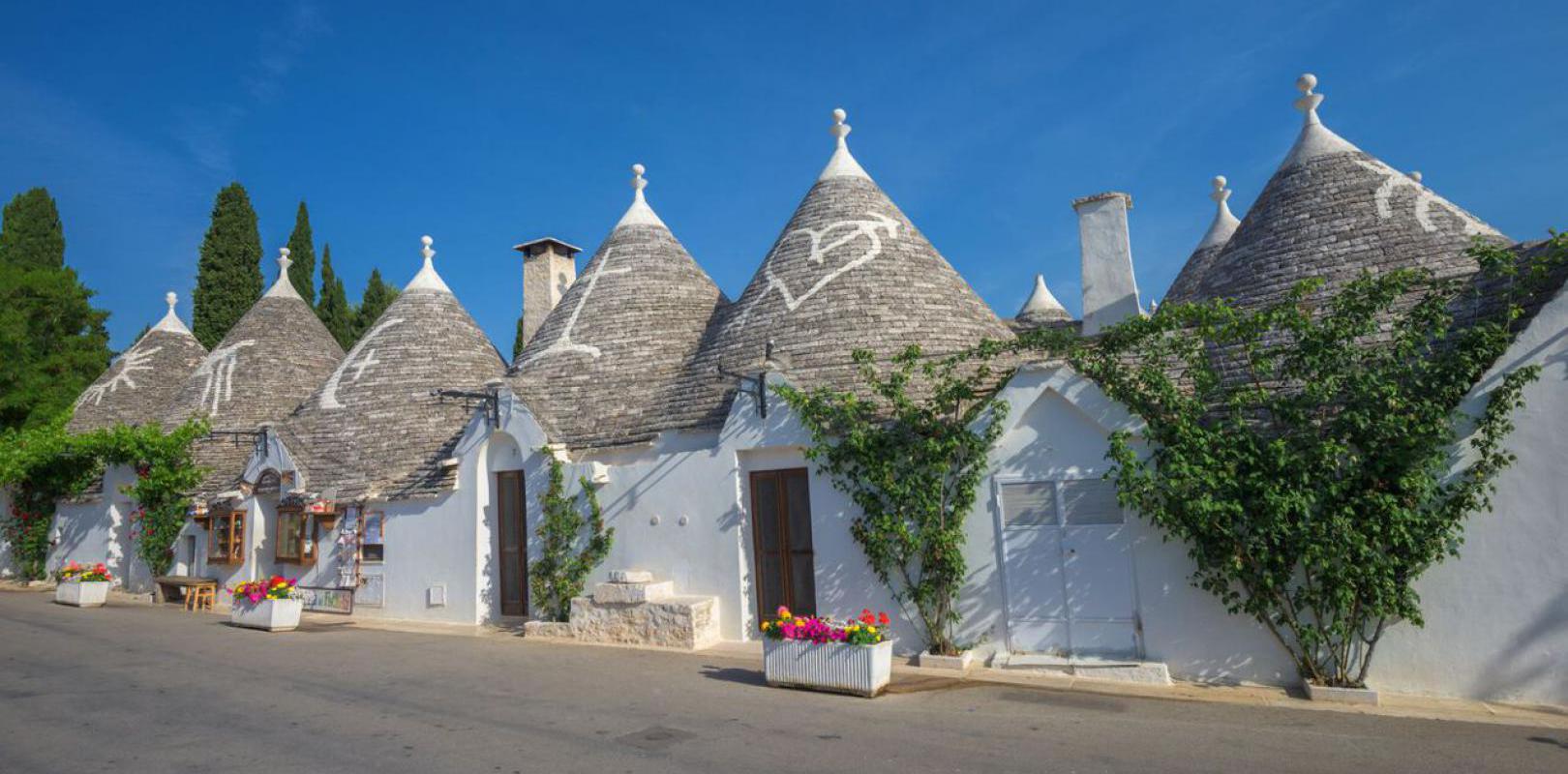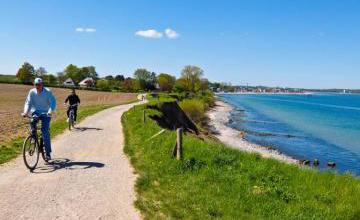The town of Alberobello, in Puglia with its naturally romantic setting, narrow streets and Trulli cones – Apulian dry stone huts – looks like a town that has come straight out of a fairy tale. Some even claim to have seen a fairy or a gnome frolicking between the Trulli cones.
Alberobello and its Trulli were declared a UNESCO heritage site in 1966. Though the Trullo (a single hut) is not unique to Alberobello – you can find these cone-shaped buildings elsewhere in Puglia – Alberobello is the only town that has a historic centre composed entirely of Trulli: you can count 1500 spread throughout the town.
What are Trulli?
The Trulli were originally peasant dwellings where those who cultivated the land could have a place to sleep and keep their working tools.
The white lime buildings are topped by a characteristic cone-shaped roof covered with grey stone tiles with a white lime tip called “Pinnacoli”. The cone is built without any framework or mortar cement. The tiles are laid one on top of the other in increasingly narrow circles up to the final funnel.
Inside the Trulli is characterized by a room, or several rooms, which are generally added around the central unit. The Trulli are habitable only on the ground floor, but below them cisterns can be dug to conserve rainwater.
Thanks to the particular construction technique, Trulli are warm in winter and cool in summer.
There are symbols on Trulli’s cones and these are lime handmade drawings and have different origins and inspirations ranging from Judaism, zodiacal and astral elements, Christianity and even Paganism.
Some of the souvenir shops in downtown peddle legends that reveal the meaning of each symbol.
Why Alberobello was built with Trulli?
At the end of the 15th century, a tax was payable whenever a Trulli was erected. In a tax evasion strategy the ruling Count Giangirolamo II forbade the use of materials such as binding mortar cement. Instead the cones were made using an interlocking stone technique.
This way the huts could be demolished quickly with just the tugging of a nose tied around the pinnacle of the cone when the emissaries of the Kingdom of Naples came into town to inspect the town.
Obviously it was always the peasant who lost out because he had to demolish the Trullo during the check and then rebuild it but still had to pay tax to the Count.
Relevant Stories
No relevant stories found


 30 Aug, 2019 01:14 PM
30 Aug, 2019 01:14 PM  by
by












 Gmail login
Gmail login
 Facebook login
Facebook login
Comments